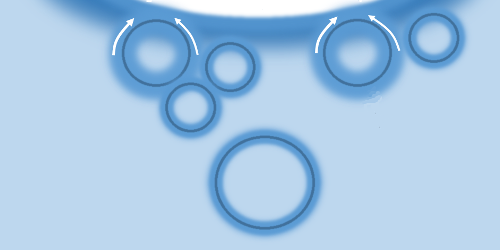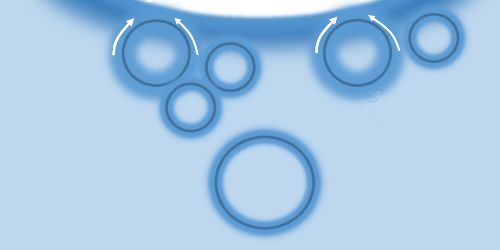Sound-Induced Bubbles for Drug Delivery
Ultrasound has long been an important tool for medical imaging. Recently, medical researchers have demonstrated that focused ultrasound waves can also improve the delivery of therapeutic agents such as drugs and genetic material. The intense waves trigger the rapid formation of bubbles that make cell membranes—as well as synthetic membranes enclosing drug-carrying vesicles—more permeable. However, the bubble-membrane interaction is not well understood. New experiments by Shamit Shrivastava and Robin Cleveland from the University of Oxford, UK, show that bubbles form more easily when membranes are at a “melting” transition.
Shrivastava and Cleveland performed ultrasound experiments on an aqueous solution containing a variety of lipid membranes, which are similar to cellular membranes. By varying the temperature of the solution, the duo investigated how the physical state of the membranes affected bubble formation. Fluorescent markers provided information about the molecular ordering within the membranes. When the researchers fired ultrasound pulses into the solution, bubbles formed near the membranes. The bubbles formed at lower acoustic energy when the temperature was near the point where the membranes were transitioning from a gel state to a more liquid-like state. The team also found that bubbles lasted longer when the membranes were in this liquid-like state.
The researchers explained these observed effects with a model that, unlike previous models, accounted for the entropy of the bubble surfaces. Future work may be able to use this model of the system’s thermodynamics to optimize drug-carrying vesicles with membranes that go through a phase transition at the desired moment during an ultrasound procedure.
This research is published in Physical Review Materials.
–Michael Schirber
Michael Schirber is a Corresponding Editor for Physics based in Lyon, France.





